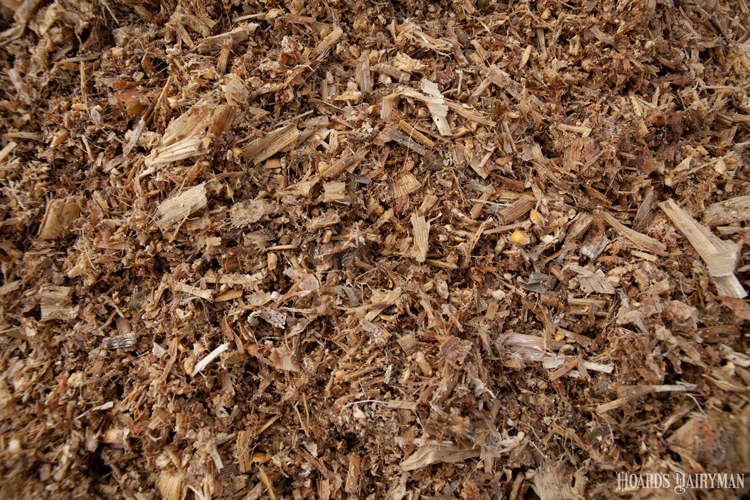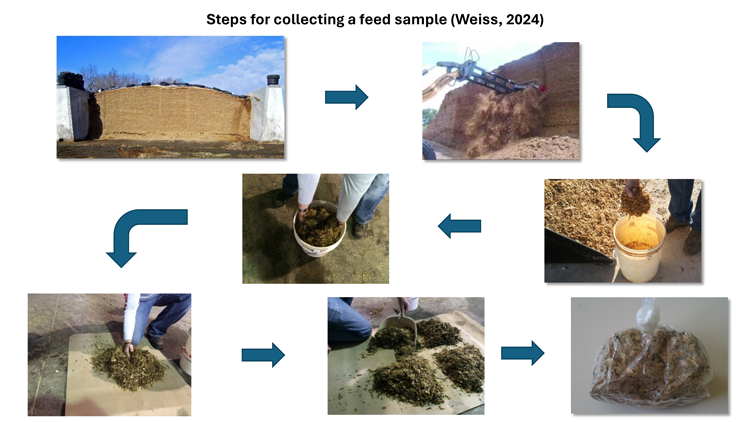
Bill Weiss, a professor emeritus from The Ohio State University, calls it the “sampling dilemma.” How do we get an accurate feed analysis when there are thousands of tons of feed in a bunker or pile and only a small bagful gets sent to the laboratory?
“You have to ask yourself, ‘What is the likelihood that this half a pound is going to represent this feed?’” Weiss said during the March Hoard’s Dairyman webinar.
If you only take one sample, there is a small probability that it reflects what you are feeding, but it’s not likely, Weiss noted. The mean of multiple samples, on the other hand, is more likely to represent what is being fed.
If multiple samples are sent and the results come back similarly, this represents precision. However, even though the samples are similar, they could also all be wrong, Weiss said. This is why accuracy in sample taking is important.
“To improve accuracy, you need to follow good sampling practices,” he said. “Following good sample practices means your samples are more likely to reflect the population. Good sampling practices might improve precision, but they will improve accuracy.”
To take a more accurate sample, Weiss shared these steps. First, he said to mix the feed as much as possible before sampling. “The more mixing that goes into the sample before you actually take the sample will represent more of the feed,” Weiss said. Collect multiple handfuls and mix them together in a bucket.

Next, take progressively smaller subsamples from that initial sample, as shown in the image. Pour out the contents of the bucket and divide the feed into sections. Choose one subsection to send as the sample. Weiss said to be sure to pick up all the small particles from that subsection as these are important components of the diet.
On a safety note, Weiss said to never sample from the face of a pile. One, you will not get a good sample that way, and more importantly, it is dangerous.
Even with good sampling technique, the sample may not represent the feed. And the more heterogeneous the feed is, such as corn silage, the less likely a single sample will represent the mean, Weiss noted. So, he emphasized the importance of taking multiple samples, and this starts back at the silo and then repeating the entire process. Simply sending in more than one of the subsections from the original sample does not have the same effect.
It costs money to submit multiple samples, Weiss acknowledged, but the value in return is less risk of an inaccurate sample.
Weiss said a bad sample provides meaningless data, and he argued that a bad sample could be worse than meaningless if a farm acts on that data and reformulates a diet based on bad data. This further emphasizes the need to collect accurate samples, which again, starts with that sampling technique.
“Spend time using good procedures,” he stated. To learn more, watch the webinar, “Feed composition varies — does it matter?” This webinar was sponsored by Kuhn.








